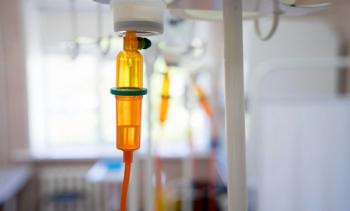
PrEP Costs Must Come Down for Uptake to Increase, Study Says
Over a 4-year study period, the price for 30 tablets of preexposure prophylaxis (PrEP) medication increased more than 20%, potentially keeping the medication out of the hands of those most at risk for potentially contracting HIV.
This story has been edited to reflect the FDA status of cabotegravir.
Between 2014 and 2018, the average price for 30 tablets of tenofovir disoproxil fumarate with emtricitabine (TDF-FTC) for preexposure prophylaxis (PrEP) increased more than 20%, potentially keeping the medication out of the hands of those most at risk for potentially contracting
“The cost of TDF-FTC is estimated to be the largest driver of the cost of providing PrEP care,” the study authors noted. “Further, the cost of TDF-FTC has increased annually above the rate of inflation.”
Despite most of the cost of PrEP being covered by insurance companies, public insurance (Medicaid, Medicare), and financial assistance programs, uptake remains suboptimal. Therefore, using the IQVIA Real World Data Longitudinal Prescriptions database, the authors investigated third-party and out-of-pocket (OOP) costs for PrEP between 2014 and 2018. Data for close to 92% of retail and 60% to 86% of mail-order prescriptions are captured by IQVIA.
Between 2014 and 2018, 90,994,854 TDF-FTC tablets were dispensed, for 2,649,900 total paid PrEP prescriptions. These numbers grew every year of the study, as did patients receiving PrEP:
- Prescriptions rose from 73,739 in 2014 to 1,100,684 in 2018
- TDF-FTC tablets dispensed rose from 2,534,309 in 2014 to 37,988,487 in 2018
- Patients receiving PrEP increased from 20,315 in 2014 to 204,720 in 2018
Data on cost for the same period for 30 tablets of TDF-FTC were also available:
- Average price rose from $1350 to $1638 (21.3%, or 5% compound annual growth rate [CAGR])
- Average OOP payment rose from $54 to $94 (74.1%, or 14.9% CAGR)
- Average third-party payment rose from $1296 to $1544 (19.1%, or 4.5% CAGR)
In addition, mean OOP payments for 30 tablets differed in several demographic areas by the end of the study period in 2018:
- Women paid $72 vs $95 for men (32%)
- Adolescents paid $37 vs $117 in adults 65 years and older (68.4%)
- Those in the West paid the least, $79, and those in the Midwest paid the most, $121 (53.2%)
- Of third-party payers, Medicaid had the lowest cost, at $3, compared with private insurance being the most expensive, at $107 (97.2%)
Because prescription data available varied—from 99% of prescriptions in 2014-2015 to just 65% for 2016-2018—“to generate estimates of TDF–FTC payments across the health care system, the total payments for prescriptions with missing payment data were multiply imputed using a generalized linear model.” This analysis revealed:
- PrEP payments increased from $114 million in 2014 to $2.08 billion in 2018, or doubled each year
- 55.8% of PrEP payments ($1.16 billion) were for patients aged 25 to 44 years
- 95.8% of PrEP payments ($1.99 billion) were for men
- The South received the most payments (29.2%; $606 million) and the Midwest the least (16.2%; $337 million)
- Commercial insurance was responsible for most overall PrEP payments (80.7%; $1.68 billion) and Medicaid, the least (2.3%; 48 million)
Despite these costs and expenditures seeming high, the authors noted that according to the CDC for 2018, just 18.1% of patients requiring PrEP had coverage for it and almost half did not continue the medication for the entire year. In addition, for the study period, OOP payments outpaced third-party payments.
An
“The high cost of PrEP does not diminish its central role in the
Reference
Furukawa NW, Zhu W, Huang Y-LA, Shrestha RK, Hoover KW. National trends in drug payments for HIV preexposure prophylaxis in the United States, 2014 to 2018. Ann Intern Med. Published online September 8, 2020. doi:10.7326/M20-0786
Newsletter
Stay ahead of policy, cost, and value—subscribe to AJMC for expert insights at the intersection of clinical care and health economics.









































